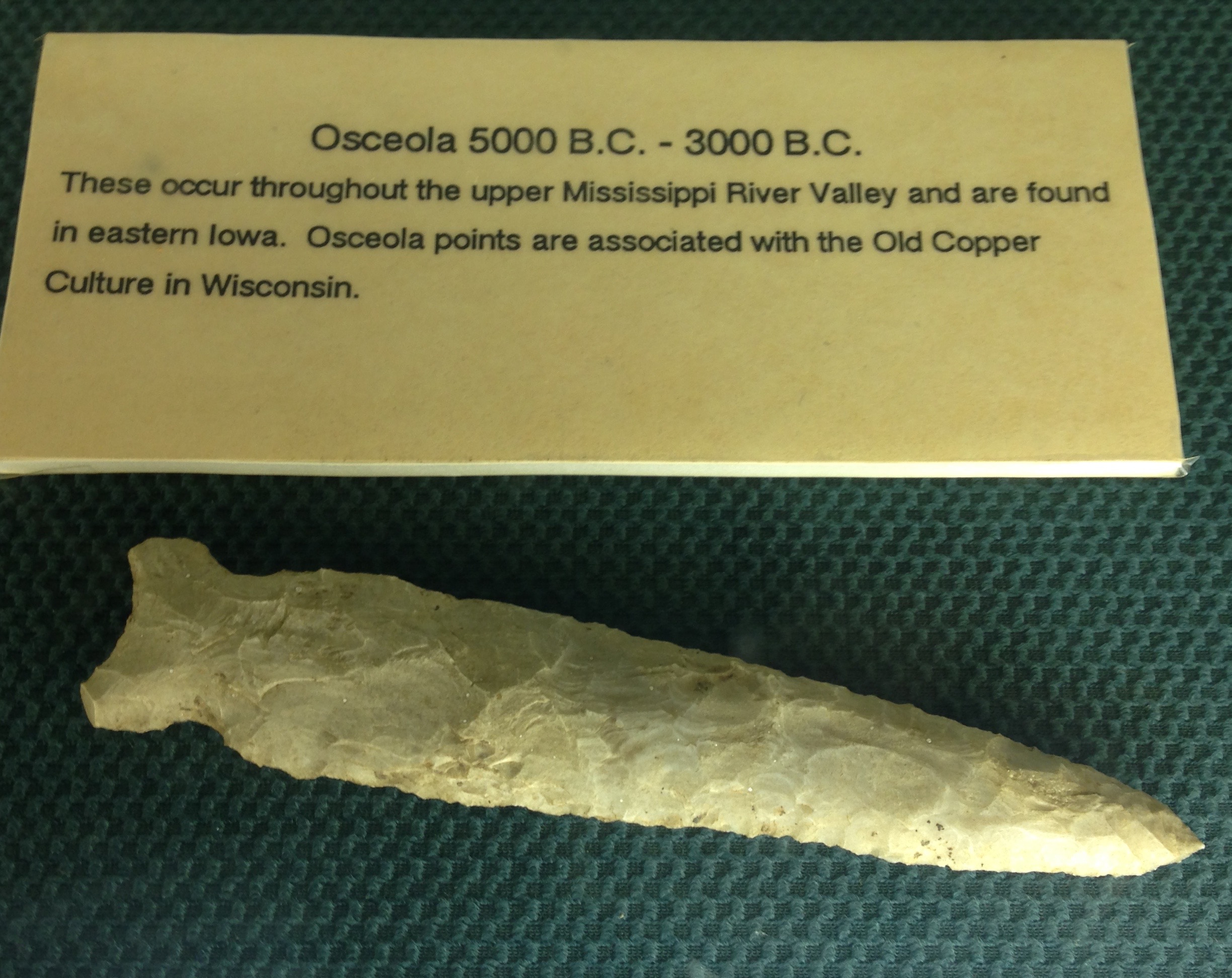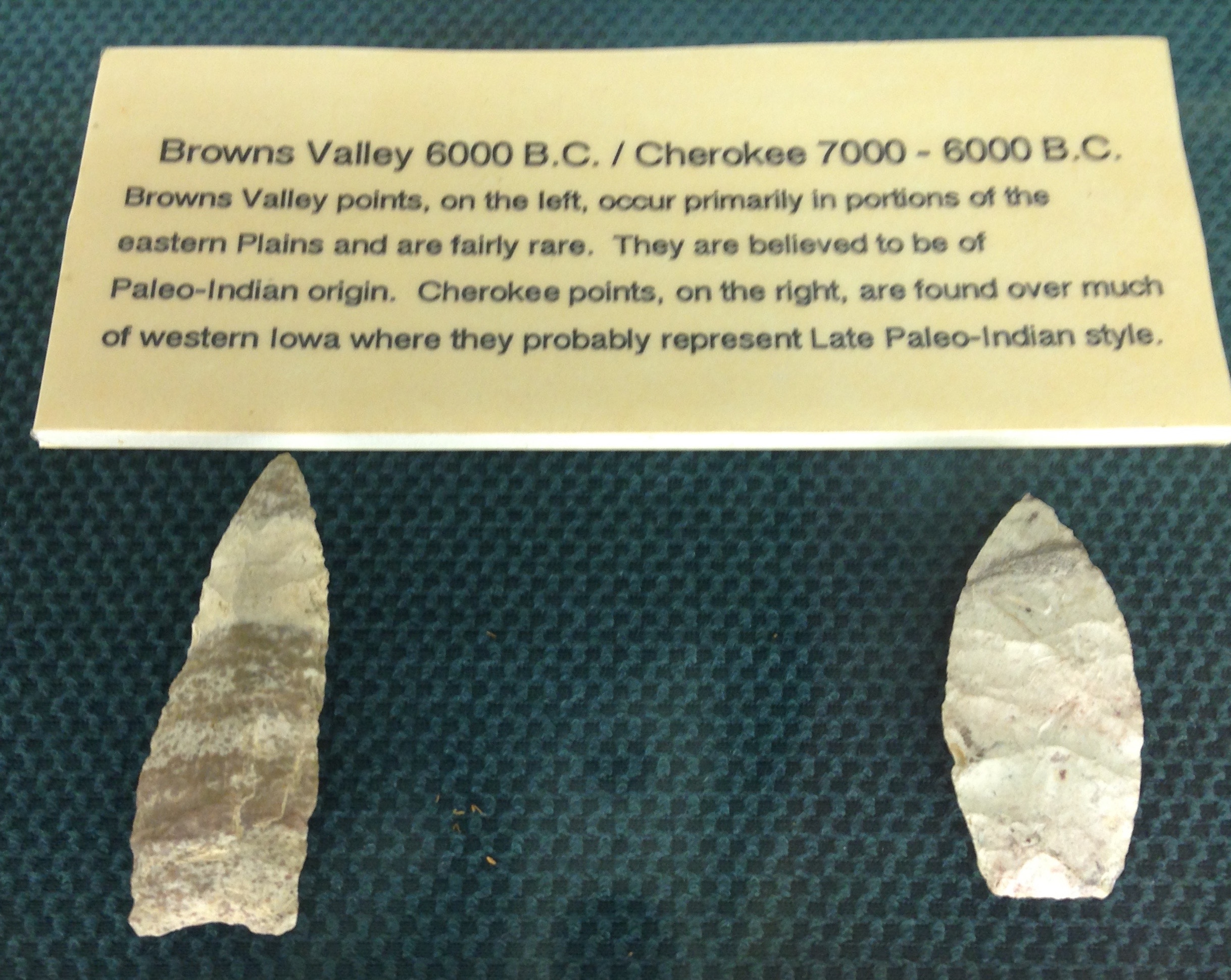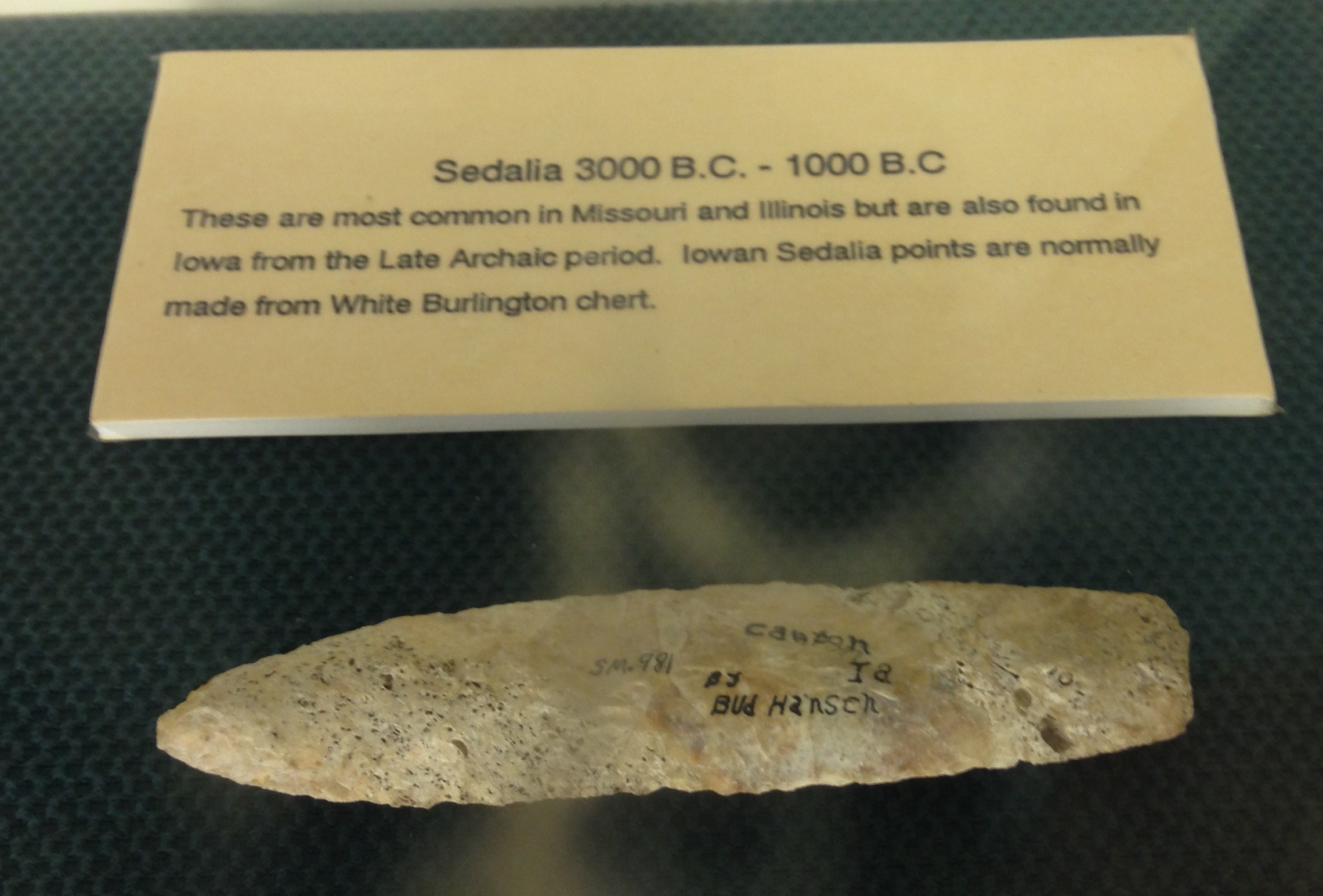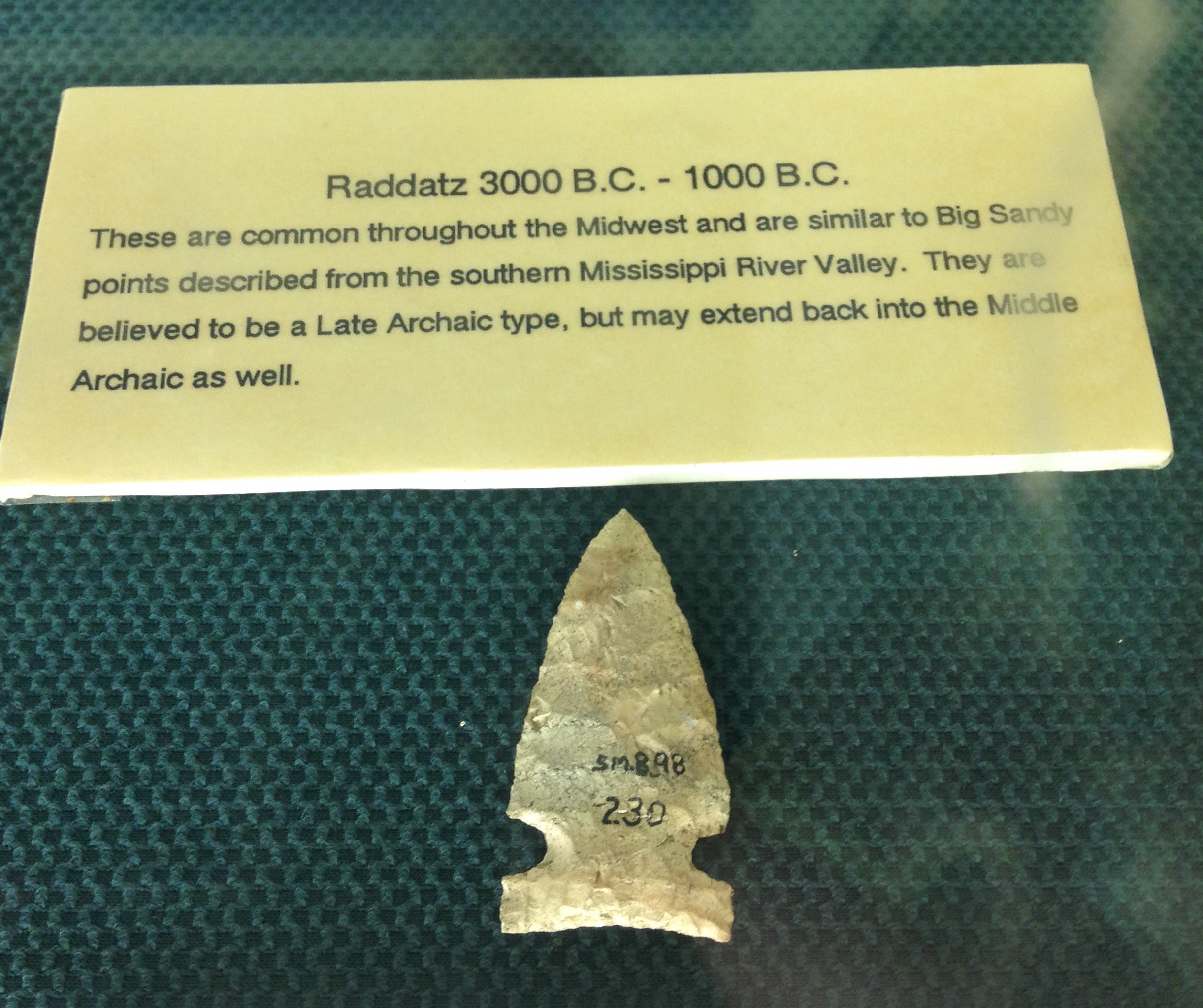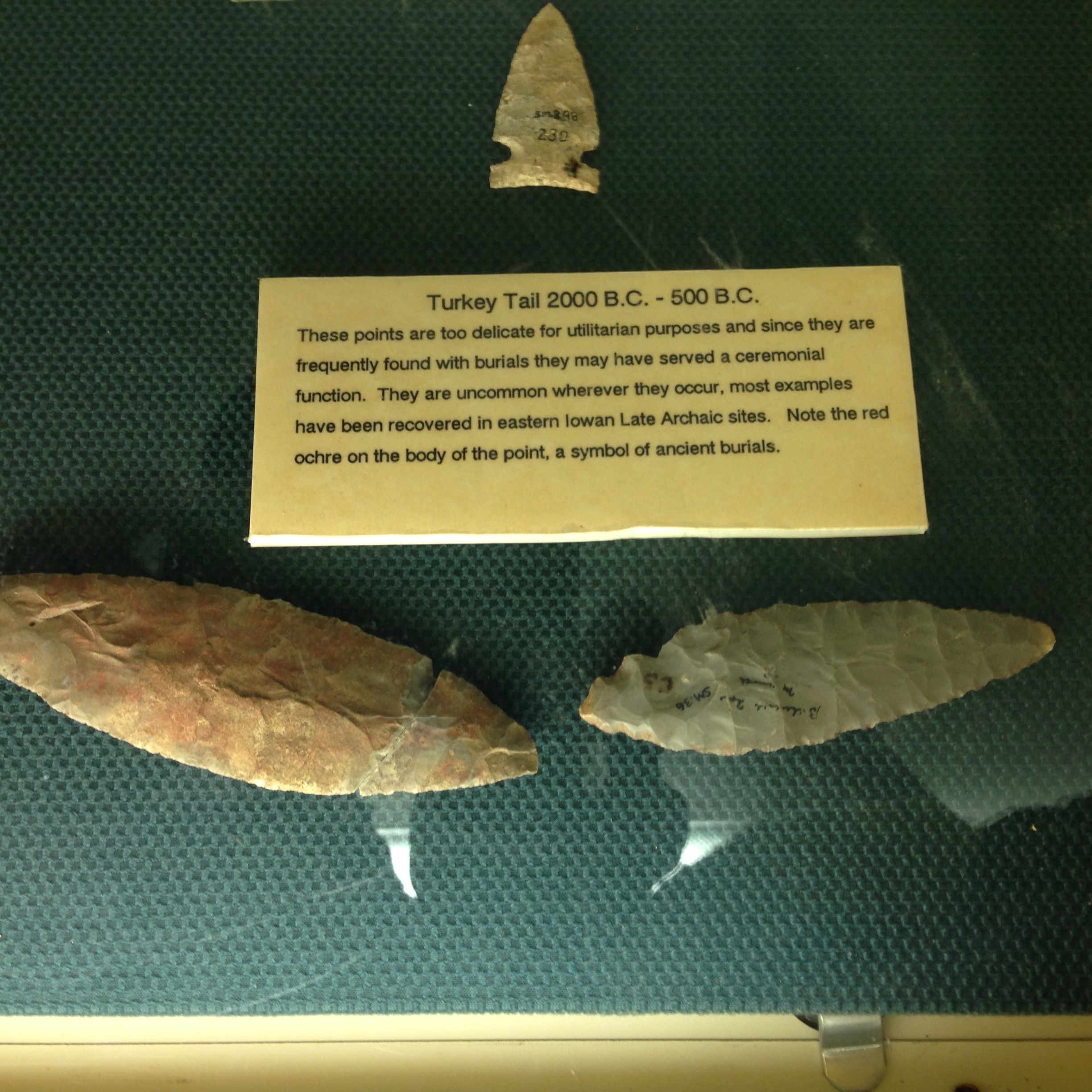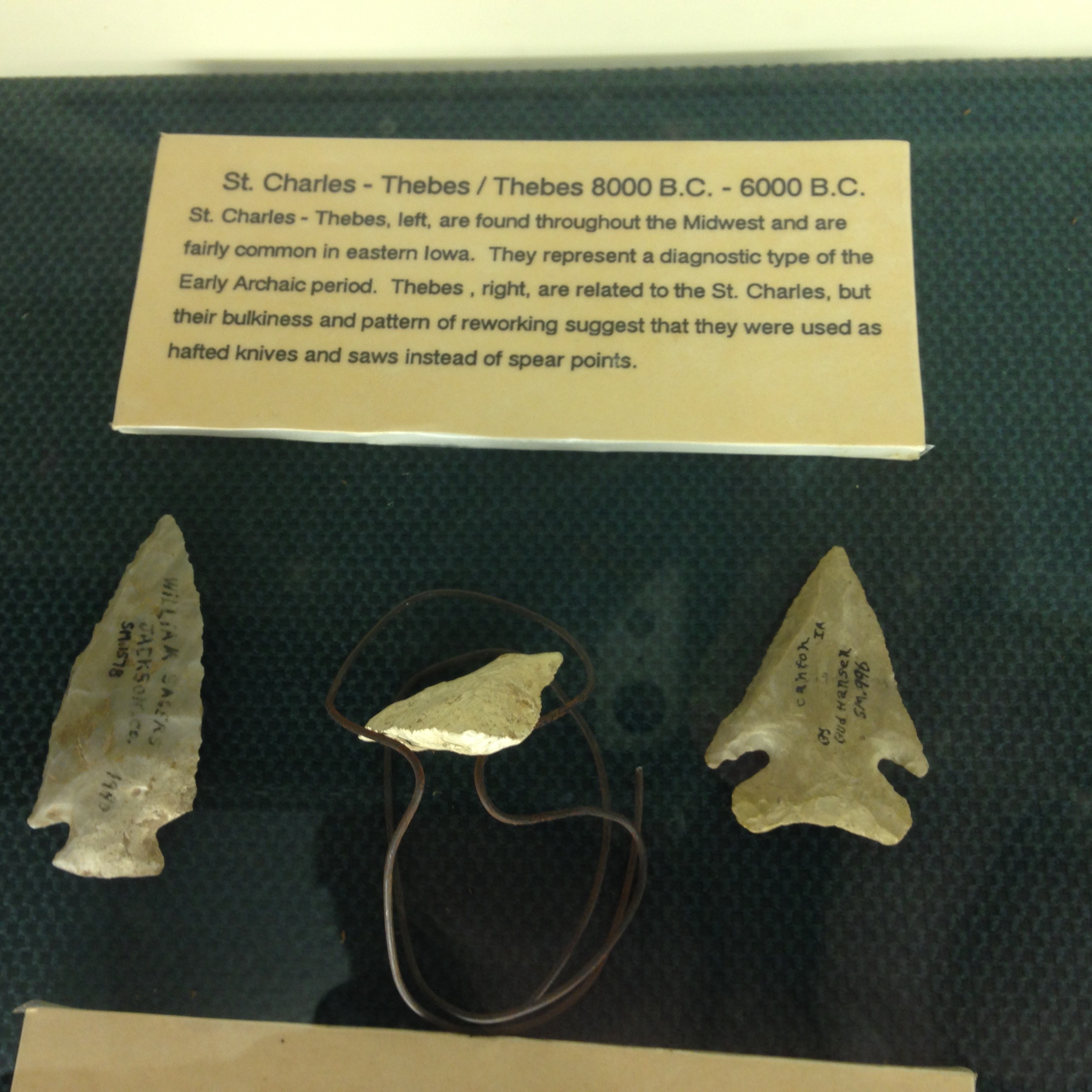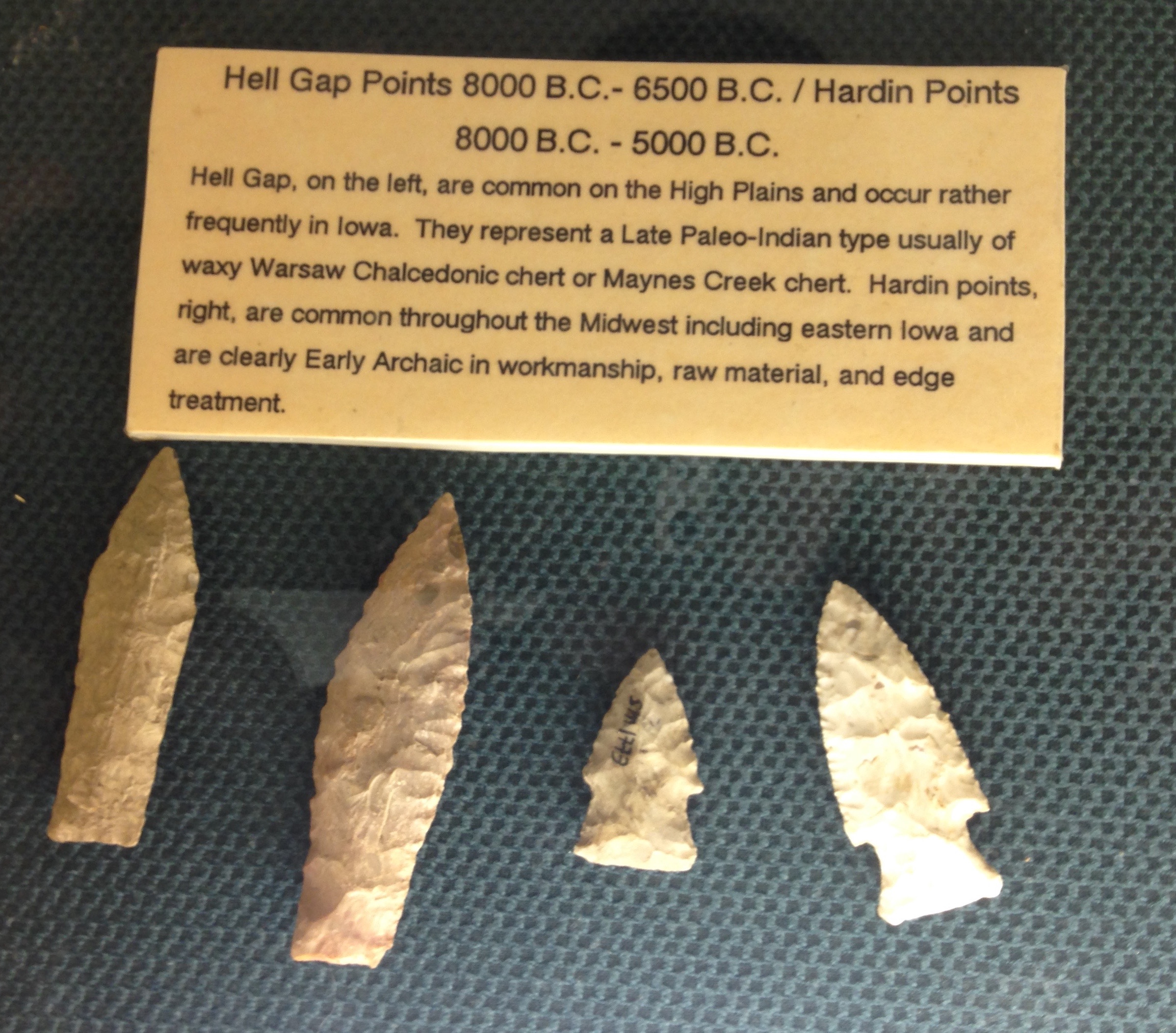Encyclopedia Dubuque
"Encyclopedia Dubuque is the online authority for all things Dubuque, written by the people who know the city best.”
Marshall Cohen—researcher and producer, CNN
Affiliated with the Local History Network of the State Historical Society of Iowa, and the Iowa Museum Association.
PROJECTILE POINTS
PROJECTILE POINTS. Flint projectile points are one of the more common artifacts of Native Americans found on archaeological sites. Such items are easily recognized and usually termed arrowheads. Archaeologists, however, prefer the term "projectile point" as a person cannot always tell if the point was used on an atlatl dart, spear point, or arrow point. (1)
Projectile points vary in size, shape, and workmanship. From such characteristics, archaeologists are able to suggest the time period when certain types of points were used. The different styles of projectile points are characteristic of certain time periods and localities, and many sites where these have been found have been dated by radiocarbon methods. Consequently, the style or type of projectile point tends to be representative of a particular time period or cultural grouping. (2)
Although some variations on style may represent that projectile points were used for different purposes, this has not been demonstrated. The idea that points of a certain shape were "war points," "fish arrows," "bird points," etc. is not supported by the archaeological record. (3)
Dart points show enormous variation in form and workmanship. The smaller sized dart points overlap with the larger sized arrow points and usually a person cannot be certain with regard to the classification of a particular point. Most dart points, however, range from about 35 mm to 100 mm in length. Longer specimens, which are common, are usually termed "spearheads" by many writers but many of these are hafted knives or artifacts which served some special cultural function. (4)
Dart points, either long or short, tend to have a wide stem or hafting area 10 mm or more in minimum width, for mounting on a heavy wooden shaft or dart foreshaft. Arrowheads, on the other hand, tend to have a stem width less than 10mm, compatible with mounting on an arrow shaft. (5)
Dart points appear earliest in the archaeological record and were used for several thousands of years before the bow and arrow became available. Of course, the use of the atlatl and dart continued after the availability of the bow and arrow, but these were eventually abandoned. Dart points are associated with the Paleo-Indian, Archaic, Woodland periods. Their final use apparently disappears sometime during the first millennium AD. (6)
Arrow points are small sized and light weight projectile points, usually less than 35 mm in length and with a narrow stem or hafting width. They are commonly made from a thin flake in which the flake scar is still evident on one face of the point. These are commonly termed "bird points" among collectors but this is an error as the point size is not to be correlated with the size of the game being hunted. Plains Villagers, for example, used these small points for hunting bison and dart points were apparently not used at all for this purpose. (7)
---
Source:
All photographs courtesy: Maquoketa Cave State Park
1. "Projectile Points," University of Oklahoma. Online: https://us.search.yahoo.com/yhs/search?hspart=iry&hsimp=yhs-fullyhosted_011&type=mcy_dnldstrtst_16_53¶m1=yhsbeacon¶m2=f%3D4%26b%3DFirefox%26cc%3DUS%26p%3Dmcyahoo%26cd%3D2XzuyEtN2Y1L1Qzu0EyE0EyE0BtDyC0CtGyCtAzytCtGyD0AtD0DtG0Azz0B0EtGzy0ByCyE0EtD0EyE0DtD0F0BtN1L1G1B1V1N2Y1L1Qzu2S0CzztAtD0CtDyBtAtGyBzyyC0BtGyE0ByDtDtG0B0Azz0BtGtDtDtBtDzzyD0CtAzy0ByCtC2QtN1Q2Zzu0StCyEyCtCtN1L2XzutAtFyDtFzytFtCtN1L1Czu%26cr%3D190970851%26a%3Dmcy_dnldstrtst_16_53&p=Projectile+Points
2. Ibid.
3. Ibid.
4. Ibid.
5. Ibid.
6. Ibid.
7. Ibid.


